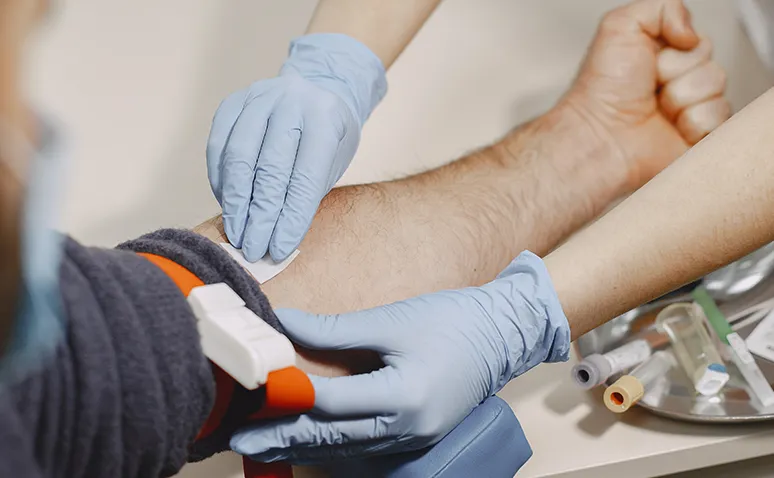Cancer screening is essential for early diagnosis and treatment. Regular screenings can detect cancers that show no symptoms in their early stages. Cancers such as breast, colon, cervical, and prostate cancers are included in screening programs. These screenings increase the chances of detecting the disease in its early stages and the likelihood of successful treatment.
Cancer screening is planned according to age, gender, and risk factors. Screening programs begin at a certain age and are shaped according to risk groups. Doctors evaluate individuals’ medical history and genetic factors to recommend an appropriate screening program. Early diagnosis is crucial in the fight against cancer.
The advantages of cancer screenings can be listed as follows:
- Cancer screening helps detect the disease in its early stages and increases the chance of treatment.
- Cancers detected early can be treated with less invasive methods.
- The success rate of treatment is higher in cancers diagnosed early.
- Pre-cancerous lesions can be identified and treated during screening, preventing cancer development.
- Regular screenings reduce the spread of cancer in society, improving overall public health.
How is cancer screening performed?
Early diagnosis can be life-saving in some types of cancer. Cancer screenings help diagnose cancer in its asymptomatic stages. There are various screening methods for different types of cancer. These screening methods should be performed regularly after a certain age, even if no symptoms are present. When symptoms arise and point to a specific type of cancer, more detailed tests may be required. At this point, the recommendations and guidance of the managing physician are crucial.

Colon Cancer Screening
Colon cancer screening is an essential step in the early detection and treatment of colorectal cancer. Colon cancer often shows no symptoms in its early stages, making regular screenings crucial for early diagnosis. Screening tests can detect pre-cancerous cells, called polyps, before cancer develops, allowing for their removal.
The most common screening method for colon cancer is colonoscopy. Colonoscopy allows the inner surface of the large intestine and rectum to be examined using a camera. This test helps identify polyps or abnormal growths in the intestines. If a suspicious structure is detected, a biopsy can be taken during the colonoscopy. This test is recommended for individuals over the age of 50, but if there is a family history of colon cancer, screening may begin at an earlier age.
Other screening methods include the fecal occult blood test (FOBT) and sigmoidoscopy. The fecal occult blood test helps detect invisible blood in the stool and is generally recommended annually. Sigmoidoscopy focuses on examining the lower part of the colon and is a less invasive method. Both tests can be used in the colon cancer screening process, but colonoscopy is the most comprehensive and definitive method. Regular screening greatly reduces the risk of colon cancer and increases the chances of early detection.
Cervical Cancer Screening
Cervical cancer screening consists of regular tests to detect and prevent cervical cancer in its early stages. Cervical cancer is one of the most common cancers among women and can be treated if diagnosed early. The most commonly used methods in this screening are the Pap smear test and the HPV test.
The Pap smear test detects cellular changes in the cervix. This test is performed by examining cell samples taken from the cervix in a laboratory. The test allows the identification of abnormal cells and intervention before cancer develops. The Pap smear test is recommended for women starting at age 21 and is typically repeated every three years.
The HPV test is used to detect the human papillomavirus (HPV), which can cause cervical cancer. HPV is a sexually transmitted virus and is the primary cause of cervical cancer. The HPV test is performed on women aged 30 and older, and the frequency of screening is determined by combining it with the Pap smear test. Regular testing of both the Pap smear and the HPV test provides effective protection against cervical cancer. These screenings allow pre-cancerous changes to be detected early, minimizing the risk of cancer development.

Breast Cancer Screening
Breast cancer screening plays a critical role in the early detection of breast cancer, one of the most common cancers among women. Early diagnosis increases the treatability of the disease and helps maintain patients’ quality of life. Breast cancer screenings aim to detect the disease in its early stages, especially in women without symptoms. These screenings are performed through regular mammograms and clinical examinations.
Mammography is one of the most effective screening methods for the early detection of breast cancer. Using low-dose X-rays, abnormal tissues or masses in the breast are identified. Mammograms are recommended for women starting at age 40 and may begin earlier for those with risk factors. The frequency of screening is determined by the individual’s age, family risk factors, and personal health status.
Prostate Cancer Screening
Prostate cancer screening helps in the early detection of prostate cancer, one of the most common cancers among men. Early diagnosis increases the chance of treatment and prevents the progression of the disease. Prostate cancer screening is performed using two main tests: the Prostate-Specific Antigen (PSA) test and the Digital Rectal Exam (DRE).
The PSA test is a blood test that measures the level of PSA in the blood. Elevated PSA levels may indicate an increased risk of prostate cancer, but this test alone is not sufficient for diagnosis. In some cases, prostate inflammation or benign prostate enlargement can also raise PSA levels. Therefore, PSA test results must be evaluated together with other tests.
The Digital Rectal Exam (DRE) allows the doctor to physically examine the prostate through the rectum. This exam helps identify abnormal growths or hardening in the prostate. When combined with the PSA test, more effective results are obtained in prostate cancer screening. Prostate cancer screening is recommended from the age of 50, but it may be started earlier in men with a family history of prostate cancer or other risk factors.
Tumor Marker Test
The tumor marker test is used to detect specific proteins and other substances secreted by cancer cells. These tests help determine the presence and spread of tumors in the body. Tumor marker tests play an important role in the early diagnosis and treatment planning of cancers, particularly those of the digestive system.
In cancers such as colorectal cancer (colon and rectum cancers), tumor markers like CEA (Carcinoembryonic Antigen) are frequently used. These markers are tested to monitor the presence of cancer and the response to treatment. However, tumor markers alone are not sufficient for diagnosis. More accurate results are obtained when combined with other diagnostic methods.
One of the most significant advantages of tumor marker tests is their ability to monitor cancer progression during and after treatment. Early diagnosis is crucial in cancers such as colorectal cancer and rectal cancer, and tumor marker tests should be part of a regular follow-up process as recommended by doctors. These tests are highly valuable for increasing the success rate of cancer treatment.
The time it takes to receive cancer screening results varies depending on the type of test and the method used. While blood tests can be returned in a few days, the results of biopsies or imaging tests may take 1-2 weeks. The techniques used and laboratory workload can also affect this duration, but in most cases, results are obtained within a week.
The most common tests used to diagnose cancer include blood tests, biopsies, and imaging methods (CT scans, MRI, ultrasound, etc.). Blood tests, such as tumor marker tests, can help identify specific types of cancer. However, a definitive diagnosis is made by examining a biopsy sample of suspicious tissue under a microscope. Additionally, imaging tests can show the location and spread of cancer.
The age at which screening tests are performed depends on risk factors. For example, breast cancer screenings are recommended from age 40, while colon cancer screenings begin at age 50. Smear tests for cervical cancer are recommended from age 21. If there is a family history or genetic predisposition, screenings may start at earlier ages.










